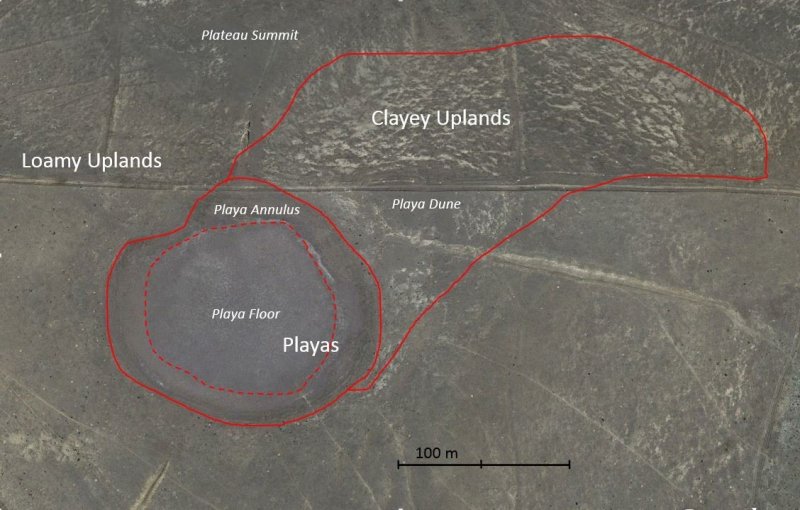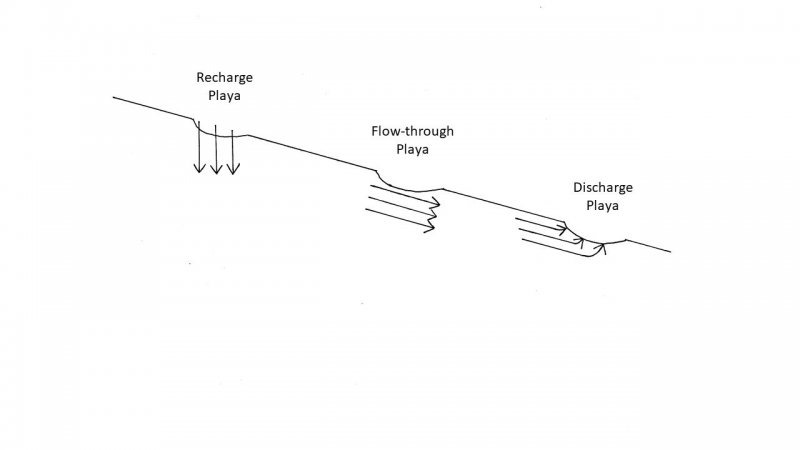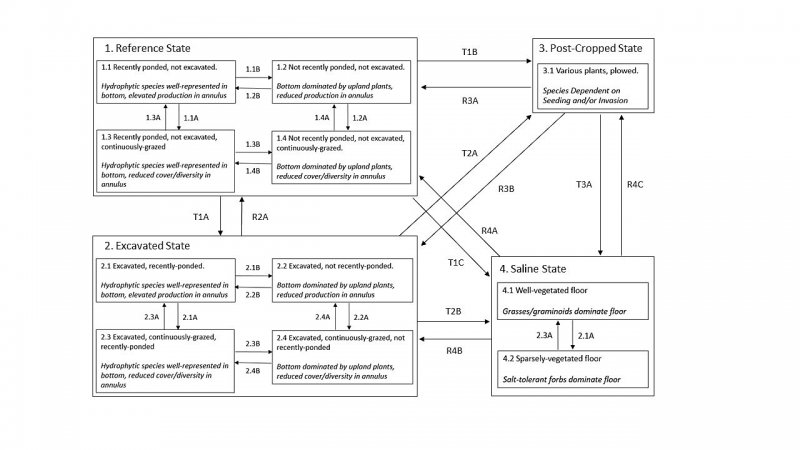Ecological dynamics
While plant community dynamics are complex in any ecological site, their complexity is multiplied in playa ecosystems. Since playa systems are composed of two inextricably-linked components, the floor and annulus, each plant community phase described herein contains two distinct plant communities. Moreover, since hydrology is markedly altered when playas are excavated to establish stock tanks, the relative percentages of these two components differ between the excavated and non-excavated states. Within a given state, plant communities on both positions respond to grazing pressure and annual weather patterns—the latter being quite pronounced since this site receives significant run-on moisture. Furthermore, the quality, quantity, and timing of run-on moisture entering playas is determined by management/disturbance regimes on adjacent uplands. This is a very similar scenario to sites that occur along streams and rivers, as these are equally sensitive to weather patterns and changes in hydrology, and contain multiple components which change positions over time.
As described in the Soil Hydrology section above, playa hydrology is strongly influenced by landscape position. For this reason, the Saline State (4.0) only occurs in playas that experience hydrologic discharge—usually as a consequence of lower landscape position coupled with the addition of irrigation water up-slope from the playa. Thus, the ecological dynamics of a given playa can be profoundly influenced by off-site management. For example, irrigation water is diverted to one playa and this, in turn, influences the hydrology of another playa lower on the landscape.
Correlation to Current Ecological Sites:
There are no legacy ecological sites that are correlated to the Playas ecological site.
State 1
Reference State
This state represents the most ecologically stable conditions in terms of hydrologic function and resistance to erosion. Moreover, this state has the highest potential for productivity and plant diversity.
It is possible that more than one state occurs in playas that have neither been plowed nor excavated. However, if so, such playas are rare enough in the Canadian Plateaus that such state-level distinctions have yet to be differentiated.
Community 1.1
Recently-ponded, not excavated (diagnostic plant community)
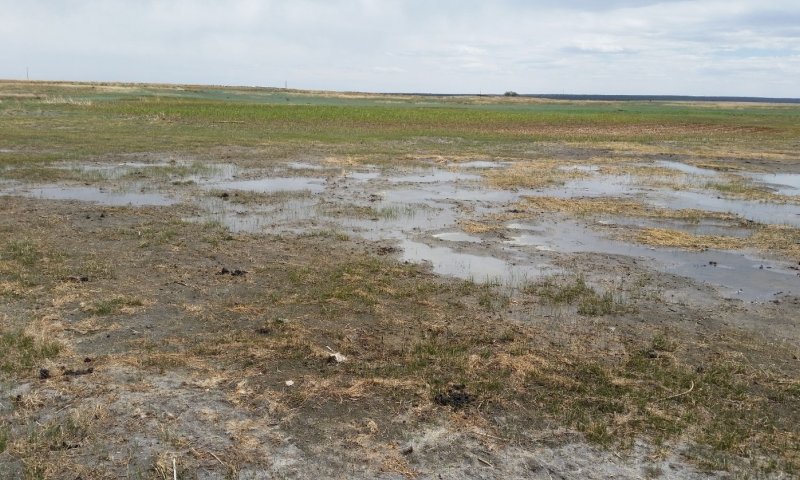
Figure 6. Community 1.1 on a playa floor in San Miguel County, May 2018. While the plant community is recovering from winter dormancy and a prolonged ponding event, it harbors a relatively diverse plant community (note stand of cattails in the background).
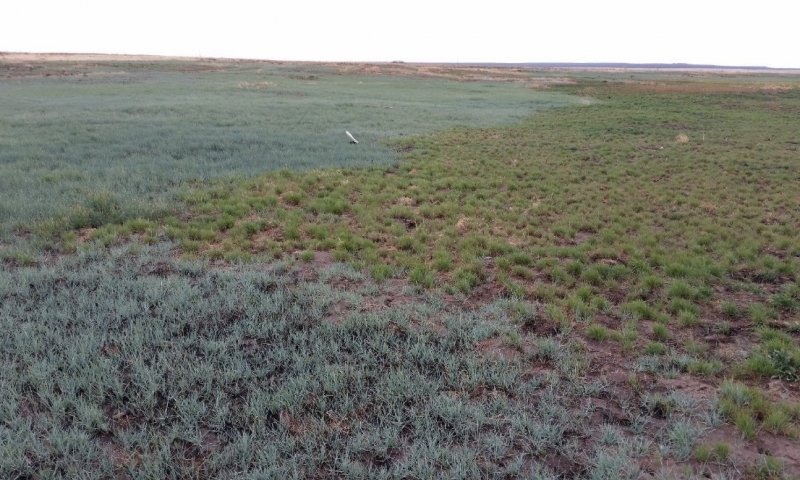
Figure 7. Community 1.1 on a playa annulus, May 2018. While the plant community is recovering from a late-winter fire and only cool-season species are visible, grass cover is already high.
This community is dominated by grasses and grass-like plants, but typically contains scattered forbs of a few species. Cool-season plants, such as western wheatgrass and arctic rush, are dominant in the playa floor. In addition to arctic rush, other hydrophytic species such Kentucky bluegrass and cattails are often present in the floor—the latter occupying the very wettest positions. The annulus contains a relatively balanced mix of cool- and warm-season species. Total foliar cover is generally greater than 90 percent on either position.
Community 1.2
Not recently-ponded, not excavated

Figure 8. Community 1.2 in Mora County, September 2017. This photo was taken in the playa bottom, where hydrophytic species have all but disappeared. While western wheatgrass is clearly dominant, buffalograss is well-represented on this position.
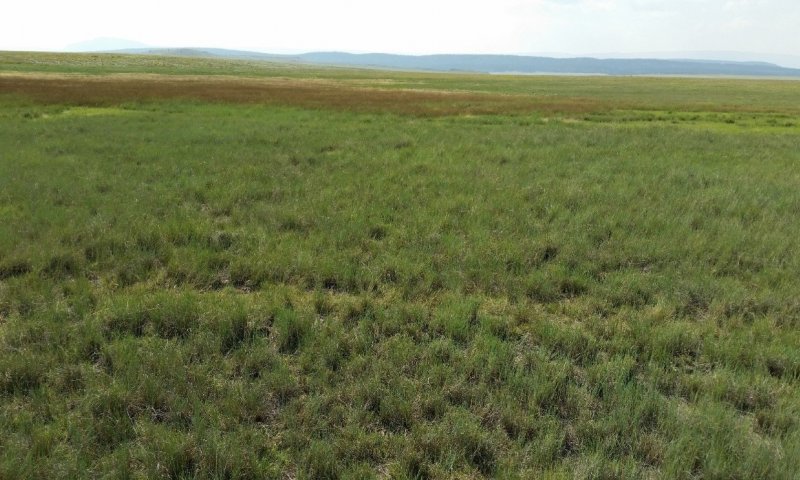
Figure 9. Community 1.2 in Mora County, September 2017. Here, only a small fraction of the playa bottom has been saturated in recent years. While the acreage supporting hydrophytic vegetation is miniscule, it acts as a seedbank refuge for species.
This community is dominated by grasses, but typically contains scattered forbs of a few species, as well as a shrub component on the annulus. Western wheatgrass is generally dominant in the playa floor, and buffalograss is often well-represented there. Hydrophytic vegetation is either lacking altogether or else confined to the very center of the playa floor. The annulus contains a mix of cool- and warm-season species—including a significant abundance of shrubs.
Community 1.3
Recently-ponded, not excavated, continuously-grazed
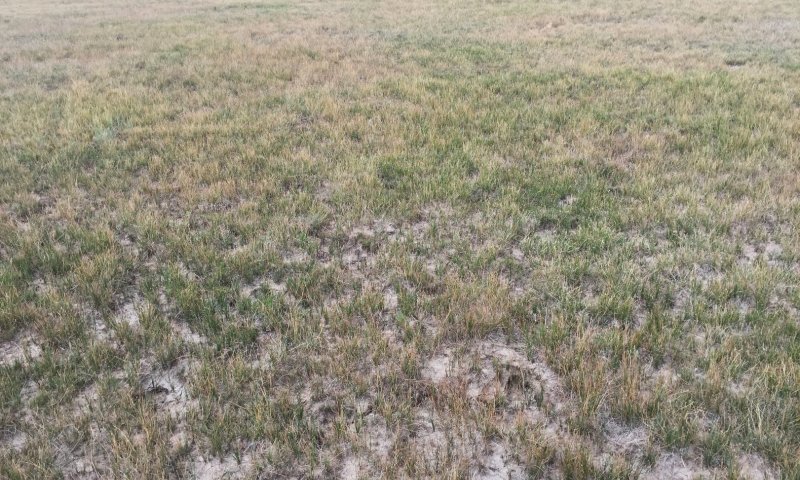
Figure 10. Community 1.3 in a playa bottom, August 2017. The dominant plant here is arctic rush. Western wheatgrass and spikerush are also well-represented. Bare patches and light soil surface indicate recent disturbance.
The community of the playa floor is dominated by cool-season grasses and grasslike plants; western wheatgrass, arctic rush, and spikerush are the most common. The community on the annulus contains relatively balanced a mix of cool- and warm-season grasses, with some forbs and shrubs, as well; buffalograss and/or western wheatgrass are most dominant here. Both communities contain scattered forbs.
Community 1.4
Not recently-ponded, not excavated, continuously-grazed
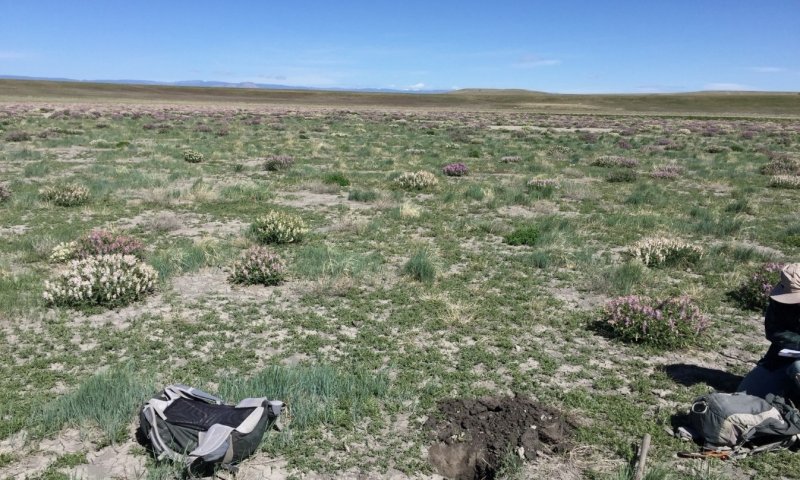
Figure 11. Community 1.4 in a playa floor in San Miguel County, May 2017. The dominance of forbs here suggests a history of continuous grazing.
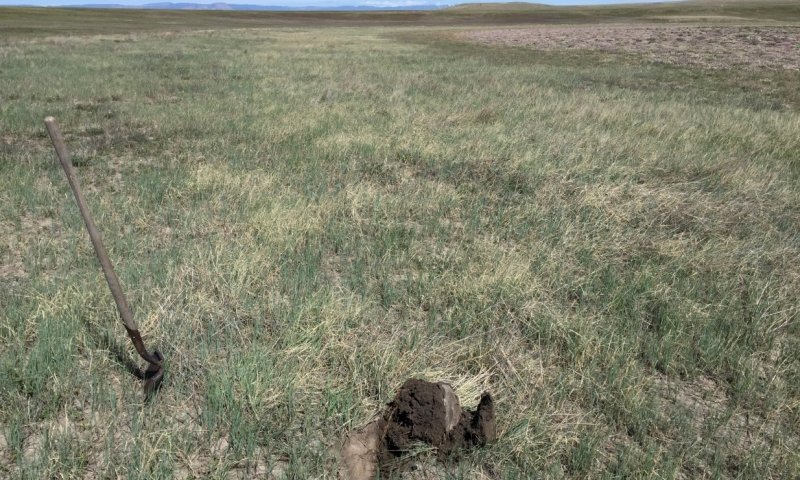
Figure 12. Community 1.4 in a playa annulus in San Miguel County, May 2017. A relatively high percentage of bare ground and the abundance of early-seral forbs suggest a history of continuous grazing.
The community of the playa floor is either dominated by grasses, or else exhibits grasses and forbs in codominance. The annulus contains a relatively balanced mix of grasses and forbs. Of the grasses, western wheatgrass is generally dominant on both landform positions. Early-seral species are quite well-represented throughout.
Pathway P1.1B
Community 1.1 to 1.2
Recently-ponded, not excavated (diagnostic plant community)
Not recently-ponded, not excavated
This pathway represents a dry period—typically spanning multiple years—during which ponding does not occur in the playa floor. Consequently, hydrophytic species “disappear”, although many persist in the seedbank, or as dormant rhizomes. Buffalograss increases in the playa floor, and upland forbs often appear on this position. In response to reduced subirrigation, the annulus experiences both diminished relative cover of cool-season species and a decrease in total plant production. It should be noted that this phase shift is not always complete. During many dry years, soils typically remain moist, if not saturated in the very center of the playa floor—thus supporting the growth of hydrophytic plants in a small area. This contributes little to overall production, but is important for biodiversity.
Pathway P1.1A
Community 1.1 to 1.3
Recently-ponded, not excavated (diagnostic plant community)
Recently-ponded, not excavated, continuously-grazed
This pathway represents a period of heavy grazing, typically season-long, which suppresses herbaceous species that are more palatable and/or less resilient under grazing pressure. While continuous grazing alone is not generally enough to extirpate major species such as western wheatgrass and Arctic rush, total cover and production of these species does diminish. Concurrently, spike rush and/or buffalograss either appear or increase in abundance within the playa floor, and a relative increase in warm-season plants occurs on the annulus.
Pathway P1.2B
Community 1.2 to 1.1
Not recently-ponded, not excavated
Recently-ponded, not excavated (diagnostic plant community)
This pathway represents at least one ponding event in the playa floor—which can result either from precipitation events or from the addition of irrigation water. Often, ponding in multiple consecutive wet years is needed for Community 1.1 to re-establish. This change in hydrology translates to an increase in the range and abundance of hydrophytic vegetation within the playa floor—or to the re-emergence of such plants from seeds and/or rhizomes. Concurrently, the annulus exhibits an increase in the relative abundance of cool-season species and in total production. It should be noted that the plant community’s response does not occur overnight. Often, the result of prolonged ponding is the death of plants intolerant of submerged conditions within the playa floor. Thus, a relatively barren playa floor is not necessarily evidence of drought or overgrazing.
Pathway P1.2A
Community 1.2 to 1.4
Not recently-ponded, not excavated
Not recently-ponded, not excavated, continuously-grazed
This pathway represents a period of heavy grazing, typically season-long, which suppresses herbaceous species that are more palatable and/or less resilient under grazing pressure. Total plant cover diminishes, as does the production of western wheatgrass.
Pathway P1.3A
Community 1.3 to 1.1
Recently-ponded, not excavated, continuously-grazed
Recently-ponded, not excavated (diagnostic plant community)
This pathway represents prescribed grazing or rest from grazing. In either case, herbaceous plants that are palatable and/or sensitive to grazing increase in vigor and abundance at the expense of less palatable and less sensitive species. Thus, a decrease in spikerush in the playa floor and a decrease in buffalograss on both positions occurs.
Pathway P1.3B
Community 1.3 to 1.4
Recently-ponded, not excavated, continuously-grazed
Not recently-ponded, not excavated, continuously-grazed
This pathway represents a dry period—typically spanning multiple years—during which ponding does not occur in the playa floor. Consequently, hydrophytic species “disappear”, although many persist in the seedbank, or as dormant rhizomes. Buffalograss increases in the playa floor, and upland forbs often appear on this position. In response to reduced subirrigation, the annulus experiences both a diminishment in the relative cover of cool-season species and a decrease in total plant production. It should be noted that this phase shift is not always complete. During many dry years, soils are at least saturated in the very center of the playa floor—thus supporting the growth of hydrophytic plants in a small area. This contributes little to overall production, but is important for biodiversity.
Pathway P1.4A
Community 1.4 to 1.2
Not recently-ponded, not excavated, continuously-grazed
Not recently-ponded, not excavated
This pathway represents prescribed grazing or rest from grazing. In either case, herbaceous plants that are palatable and/or sensitive to grazing increase in vigor and abundance at the expense of less palatable and less sensitive species. Thus, an increase in western wheatgrass, and decreases in early-seral forbs and buffalograss on both positions occurs.
Pathway P1.4B
Community 1.4 to 1.3
Not recently-ponded, not excavated, continuously-grazed
Recently-ponded, not excavated, continuously-grazed
This pathway represents at least one ponding event in the playa floor—which can result either from precipitation events or from the addition of irrigation water. Often, ponding in multiple consecutive wet years is needed for a shift to Community 1.3. This change in hydrology translates to an increase in the range and abundance of hydrophytic vegetation within the playa floor—or to the re-emergence of such plants from seeds and/or rhizomes. Concurrently, the annulus exhibits an increase in the relative abundance of cool-season species and in total production. It should be noted that the plant community’s response does not occur overnight. Often, the immediate result of prolonged ponding is the death of land plants in the playa floor. Thus, a relatively barren playa floor is not necessarily evidence of drought or overgrazing.
State 2
Excavated State
This state occurs where a portion of the playa floor has been excavated in order to establish a stock tank. The hydrology of both of the floor and the annulus has been significantly altered.
Community 2.1
Excavated, recently-ponded
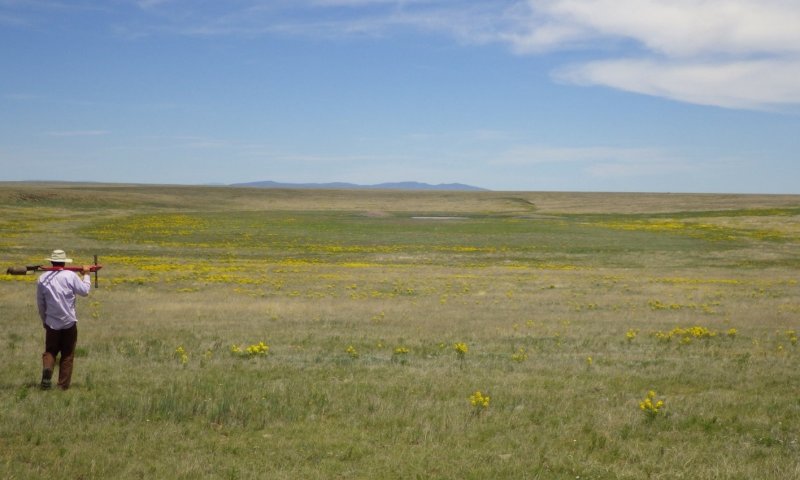
Figure 13. Community 2.1 in San Miguel County, June 2015. Person approaching outer edge of annulus. Playa floor is a deeper shade of green. A stock tank appears on the far end of the playa floor.
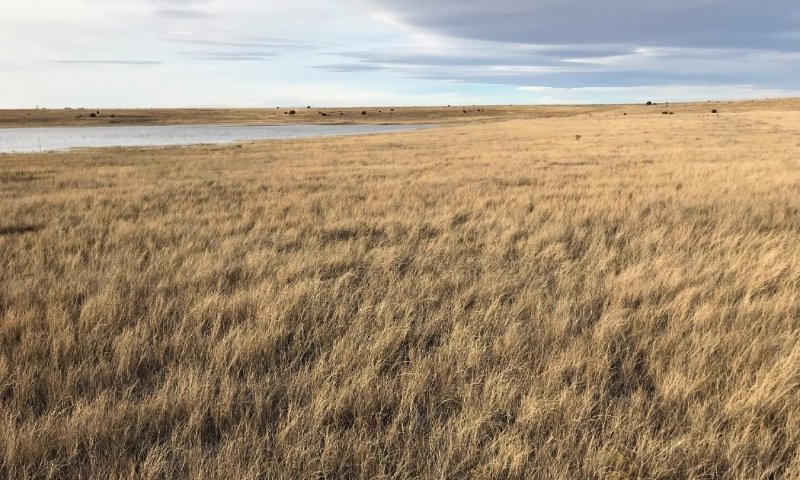
Figure 14. Community 2.1 in San Miguel County, November 2017. The playa annulus, which dominates the frame, exhibits very high production of western wheatgrass. Cattle had been absent in this pasture for 5 years.
This community phase occurs in excavated playas that have received both recent ponding and rest from continuous grazing. The playa floor community is dominated by cool-season grasses, and contains some wetland plants—often congregated near the stock tank. The annulus contains a mix of grasses, forbs, and shrubs, with warm- and cool-season species being well-represented. Early-seral forbs and grasses are generally present on both landform positions.
Community 2.2
Excavated, not recently-ponded
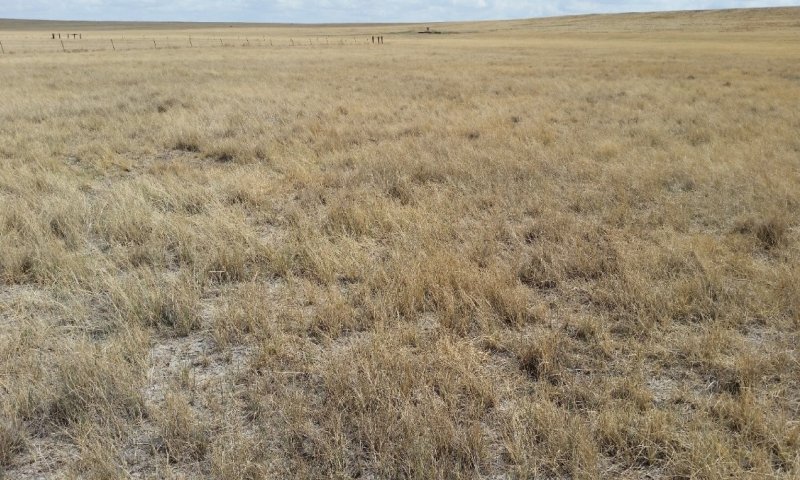
Figure 15. Community 2.2 on a playa floor in Harding County at the end of a dry spring, May 2018. The dominance of western wheatgrass here reflects rest from continuous grazing, as well as a lack of major ponding events in recent years.
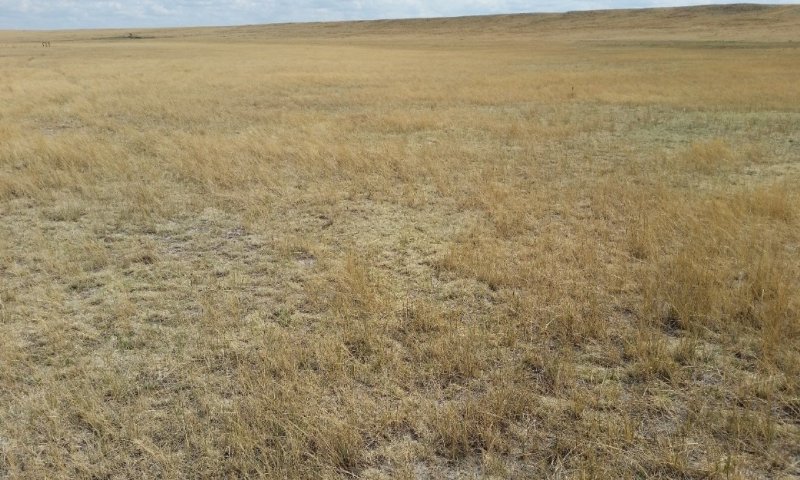
Figure 16. Community 2.2 on a playa annulus at the end of a dry spring, May 2018. Western wheatgrass is increasing with prescribed grazing, while buffalograss reflects a history of continuous grazing and a lack of spring moisture.
The playa floor contains a mix of cool- and warm-season grasses, with either western wheatgrass or buffalograss being dominant. The annulus contains a mix of cool- and warm-season species—including a significant abundance of shrubs. Early-seral forbs and grasses are generally quite abundant on both landform positions.
Community 2.3
Excavated, continuously-grazed, recently-ponded
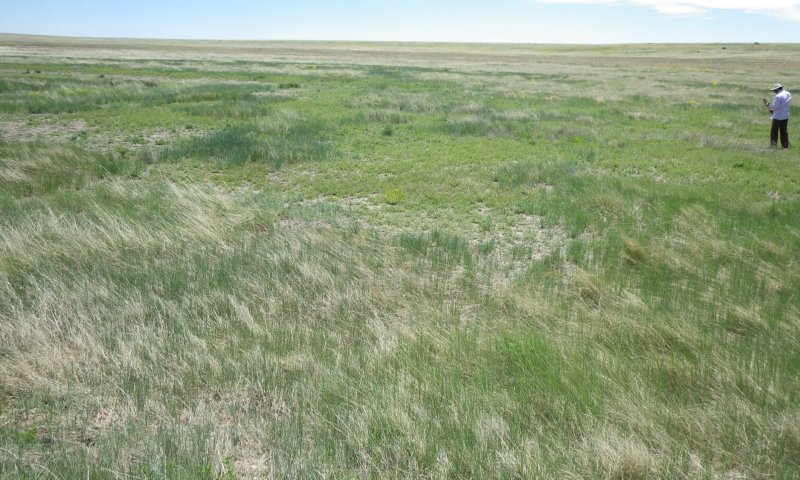
Figure 17. Community 2.3 in San Miguel County, June 2015. This image is from a playa floor that has been both excavated and bisected by a road. Recent ponding has led to relatively high production.
The playa floor community contains a mix of cool-season grasses and various forbs—including some wetland plants. The latter are most concentrated near the stock tank. The annulus contains a mix of grasses, forbs, and shrubs, with warm- and cool-season species being well-represented. Buffalograss is often a major player on the annulus, and is frequently present on the playa floor. Early-seral forbs and grasses are generally quite abundant on both landform positions.
Community 2.4
Excavated, continuously-grazed, not recently-ponded
The playa floor contains a mix of cool- and warm-season grasses, with western wheatgrass and buffalograss generally being codominant. The annulus contains a mix of cool- and warm-season species—including a significant abundance of shrubs. Sleepygrass is a common species on both positions. Early seral forbs and grasses are generally quite abundant on both landform positions. Recent erosion on the annulus and deposition to the playa floor are both quite evident.
Pathway P2.1B
Community 2.1 to 2.2
Excavated, recently-ponded
Excavated, not recently-ponded
This pathway represents a dry period—typically spanning multiple years— during which ponding may occur in the middle of the tank, but does not saturate topsoil in the playa floor.
Pathway P2.1A
Community 2.1 to 2.3
Excavated, recently-ponded
Excavated, continuously-grazed, recently-ponded
This pathway represents a period of heavy grazing, typically season-long, which suppresses herbaceous species that are more palatable and/or less resilient under grazing pressure.
Pathway P2.2B
Community 2.2 to 2.1
Excavated, not recently-ponded
Excavated, recently-ponded
This pathway represents at least one major ponding event in the playa floor. Often, multiple consecutive wet years are needed for Community 2.1 to re-establish, and all but complete filling or breaching of the stock tank may not suffice
Pathway P2.4A
Community 2.2 to 2.4
This pathway represents prescribed grazing or rest from grazing. In either case, herbaceous plants that are palatable and/or sensitive to grazing increase in vigor and abundance, and early-seral forbs are at a competitive disadvantage.
Pathway P2.3A
Community 2.3 to 2.1
Excavated, continuously-grazed, recently-ponded
Excavated, recently-ponded
This pathway represents prescribed grazing or rest from grazing. In either case, herbaceous plants that are palatable and/or sensitive to grazing increase in vigor and abundance.
Pathway P2.3B
Community 2.3 to 2.4
This pathway represents a dry period—typically spanning multiple years—during which ponding may occur in the middle of the tank, but does not saturate topsoil in the playa floor.
Pathway P2.2A
Community 2.4 to 2.2
This pathway represents a period of heavy grazing, typically season-long, which suppresses herbaceous species that are more palatable and/or less resilient under grazing pressure.
Pathway P2.4B
Community 2.4 to 2.3
This pathway represents at least one major ponding event in the playa floor. Often, multiple consecutive wet years are needed for Community 2.1 to re-establish, and all but complete filling or breaching of the stock tank may not suffice.
State 3
Post-Cropped State
This state occurs where a playa has been plowed. Given enough data, this state could probably be divided into multiple phases.
Community 3.1
Various plants, plowed
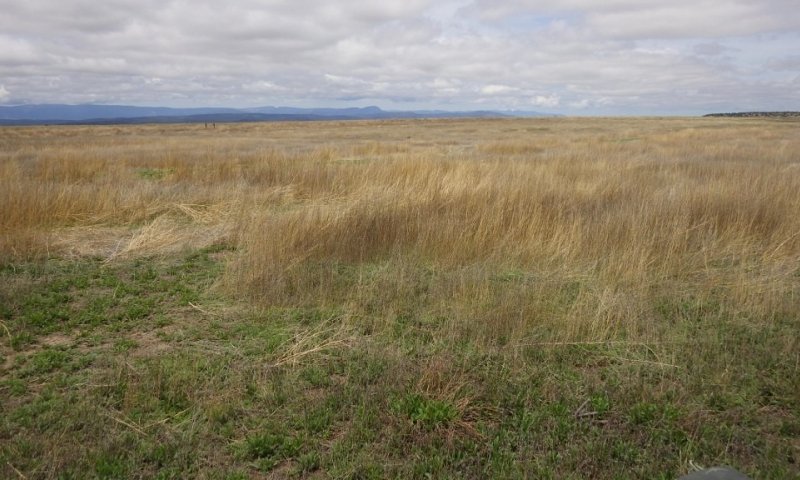
Figure 18. Community 3.1 in San Miguel County, May 2015. Western wheatgrass and field bindweed are codominant here.
Various cool-and warm-season plants occupy this community phase. Species present depend largely on the span since plowing. However, since plowing of most playas was abandoned decades ago, and since ecological succession proceeds with relative speed in these run-on sites, the plant communities in most plowed playas are relatively stable. Western wheatgrass and field bindweed are the most common species on playa floor. Annuli contain a mix of cool-and warm-season plants, with early-seral species being quite well-represented.
State 4
Saline State
This state occurs where a given playa has been the site of net groundwater discharge for a number of years. As a result, soils exhibit significant concentrations of salts—particularly gypsum. The term “saline” is used relatively here, as these soils are typically very slightly to slightly saline (EC values of 2-8 dS/M). However, gypsum contents and salt crusts at the soil surface both influence the plant community, with the latter inhibiting germination. As noted in Soil Hydrology and Water Features, such conditions are much more likely in playas that occupy lower positions on a landscape.
This state could theoretically be divided into at least two phases: one in which recent ponding is evidenced by a sparse, forb-dominated community on the playa floor; and another where a lack of recent ponding is evidenced by a more robust, grass-dominated community on the playa floor. However, since all field observations occurred in playas affected by current irrigation, community phase 4.1 is the only one that has been documented.
Community 4.1
Saline soils, salt-tolerant vegetation
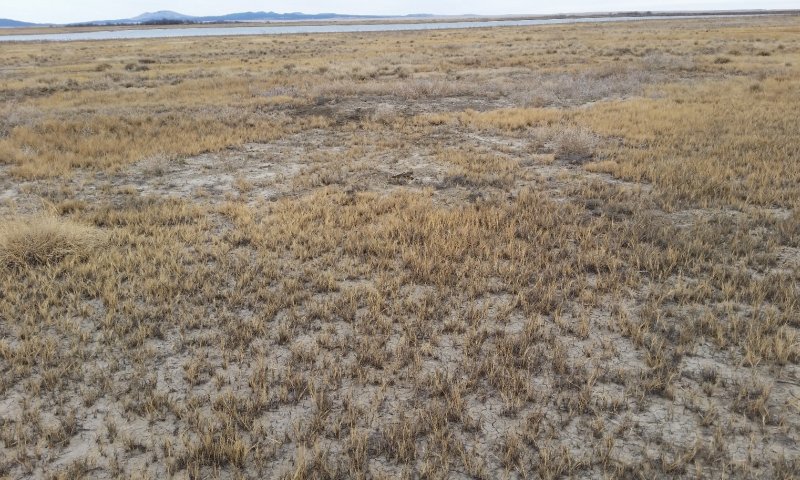
Figure 19. Community 4.1 on an annulus in Colfax County, November 2017. Standing water on the playa floor is visible in the background. The dominant plant here is inland saltgrass.
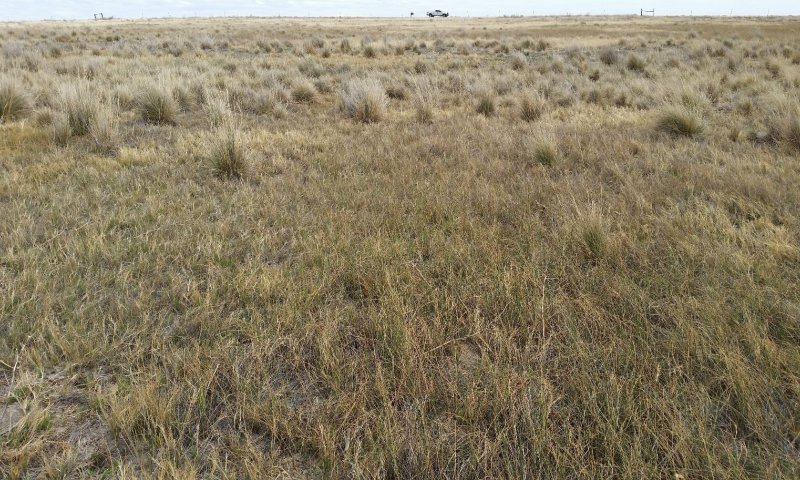
Figure 20. Community 4.1 on a playa annulus in San Miguel County, May 2018. Dominant plants are inland saltgrass and alkali sacaton.
The playa floor is sparsely vegetated and forb-dominated. Salt-tolerant members of the Chenopodiaceae plant family are most dominant here. Average annual production ranges from 0 to 600 pounds per acre, depending mostly on the amount of time since inundation. The annulus is well-vegetated and dominated by grasses—particularly inland saltgrass and alkali sacaton. Fourwing saltbush is also common. Average annual production ranges from 1,000 to 2,000 pounds per acre.
Transition T1A
State 1 to 2
Trigger event: A portion of the playa floor is excavated in order to establish a stock tank. A primary threshold is generally crossed during excavation, as a sizeable tank will markedly alter hydrology—both of the floor and the annulus. Slow variables: The area surrounding the stock tank receives frequent and heavy trampling, and palatable species experience intense grazing pressure. This leads to a reduction in palatable species and soil health parameters. Secondary thresholds are reached when certain palatable species are extirpated, and when significant amounts of topsoil are transported from the annulus to the playa floor.
Transition T1B
State 1 to 3
Trigger event(s): Plowing kills perennial plants. Slow variables: Once crop planting ceases, pioneer species (mostly annual forbs) establish and their abundance gradually increases. Given frequent additions of run-on water, perennial grasses re-establish more rapidly than they would in an upland site. Threshold: After repeated cycles of plowing and/or applications of herbicides, certain species within the native seedbank are exhausted.
Transition T1C
State 1 to 4
Landscape hydrology is altered such that the playa becomes a site of net groundwater discharge rather than recharge or flow-through. This is most often the result of the addition of irrigation water to landforms above the playa in question, but could theoretically occur in response to changes in weather patterns. Slow variables: In periods between ponding events, capillary action draws groundwater to the surface of the playa. Evapotranspiration leaves behind the salts (particularly gypsum) that were dissolved in the groundwater. Since the water table is elevated, ponding no longer flushes these salts from soils. Thus, over a number of years under the new hydrologic regime, significant amounts of salts accumulate in the playa soils.
Restoration pathway R2A
State 2 to 1
Slow variables: In the absence of excavation activities, the tank gradually fills-in. Alternatively, this can be accomplished in a short span by pushing the berm into the tank with heavy equipment. Threshold: The tank fills to the point that hydrological response to rain events returns to that of state 1.
Transition T2A
State 2 to 3
Trigger event(s): Plowing kills perennial plants. Slow variables: Once crop planting ceases, pioneer species (mostly annual forbs) establish and their abundance gradually increases. Given frequent additions of run-on water, perennial grasses re-establish more rapidly than they would in an upland site. Threshold: After repeated cycles of plowing and/or applications of herbicides, certain species within the native seedbank are exhausted.
Transition T2B
State 2 to 4
Landscape hydrology is altered such that the playa becomes a site of net groundwater discharge rather than recharge or flow-through. This is most often the result of the addition of irrigation water to landforms above the playa in question, but could theoretically occur in response to changes in weather patterns. Slow variables: In periods between ponding events, capillary action draws groundwater to the surface of the playa. Evapotranspiration leaves behind the salts (particularly gypsum) that were dissolved in the groundwater. Since the water table is elevated, ponding no longer flushes these salts from soils. Thus, over a number of years under the new hydrologic regime, significant amounts of salts accumulate in the playa soils.
Restoration pathway R3A
State 3 to 1
This restoration pathway will culminate in the establishment of a State 1 plant community. It will involve the re-introduction of extirpated species. If a stock tank is present, it must be filled in order to restore hydrology.
Restoration pathway R3B
State 3 to 2
This restoration pathway will culminate in the establishment of a State 2 plant community. It will involve the re-introduction of extirpated species, and may require the excavation of a stock tank.
Transition T3A
State 3 to 4
Landscape hydrology is altered such that the playa becomes a site of net groundwater discharge rather than recharge or flow-through. This is most often the result of the addition of irrigation water to landforms above the playa in question, but could theoretically occur in response to changes in weather patterns. Slow variables: In periods between ponding events, capillary action draws groundwater to the surface of the playa. Evapotranspiration leaves behind the salts (particularly gypsum) that were dissolved in the groundwater. Since the water table is elevated, ponding no longer flushes these salts from soils. Thus, over a number of years under the new hydrologic regime, significant amounts of salts accumulate in the playa soils.
Restoration pathway R4A
State 4 to 1
Each restoration pathway from State 4 will necessarily involve a change in landscape hydrology which effectively lowers the water table below the playa in question. In most cases, this will involve a reduction or cessation of irrigation activities up-slope from the playa. The result is that water effectively percolates through the soils of the playa floor. Highly soluble salts such as sodium chloride and sodium bicarbonate are removed rapidly—perhaps in a matter of years. Gypsum, having only moderate solubility and often times being quite concentrated in State 4, will require decades to be markedly reduced, and perhaps centuries to be removed entirely. Which of the three restoration pathways the plant community takes will depend on a number of factors.
R4A will occur if a stock tank is either absent or removed from the playa floor, and if native, hydrophytic plants can be re-introduced to the playa floor. Re-introduction of plants may require the initial removal of salts (a slow process), followed by seeding activities.
Restoration pathway R4B
State 4 to 2
Each restoration pathway from State 4 will necessarily involve a change in landscape hydrology which effectively lowers the water table below the playa in question. In most cases, this will involve a reduction or cessation of irrigation activities up-slope from the playa. The result is that water effectively percolates through the soils of the playa floor. Highly soluble salts such as sodium chloride and sodium bicarbonate are removed rapidly—perhaps in a matter of years. Gypsum, having only moderate solubility and often times being quite concentrated in State 4, will require decades to be markedly reduced, and perhaps centuries to be removed entirely. Which of the three restoration pathways the plant community takes will depend on a number of factors.
R4B will occur if a stock tank remains in the playa floor. Again, re-introduction of plants may require the initial removal of salts (a slow process), followed by seeding activities.
Restoration pathway R4C
State 4 to 3
Each restoration pathway from State 4 will necessarily involve a change in landscape hydrology which effectively lowers the water table below the playa in question. In most cases, this will involve a reduction or cessation of irrigation activities up-slope from the playa. The result is that water effectively percolates through the soils of the playa floor. Highly soluble salts such as sodium chloride and sodium bicarbonate are removed rapidly—perhaps in a matter of years. Gypsum, having only moderate solubility and often times being quite concentrated in State 4, will require decades to be markedly reduced, and perhaps centuries to be removed entirely. Which of the three restoration pathways the plant community takes will depend on a number of factors.
R4C will occur if the extirpated plant community is not effectively re-introduced. Regardless of whether or not cultivation occurred prior to the accumulation of salts, early-seral forbs will dominate the playa floor if native grasses are not effectively re-introduced.


